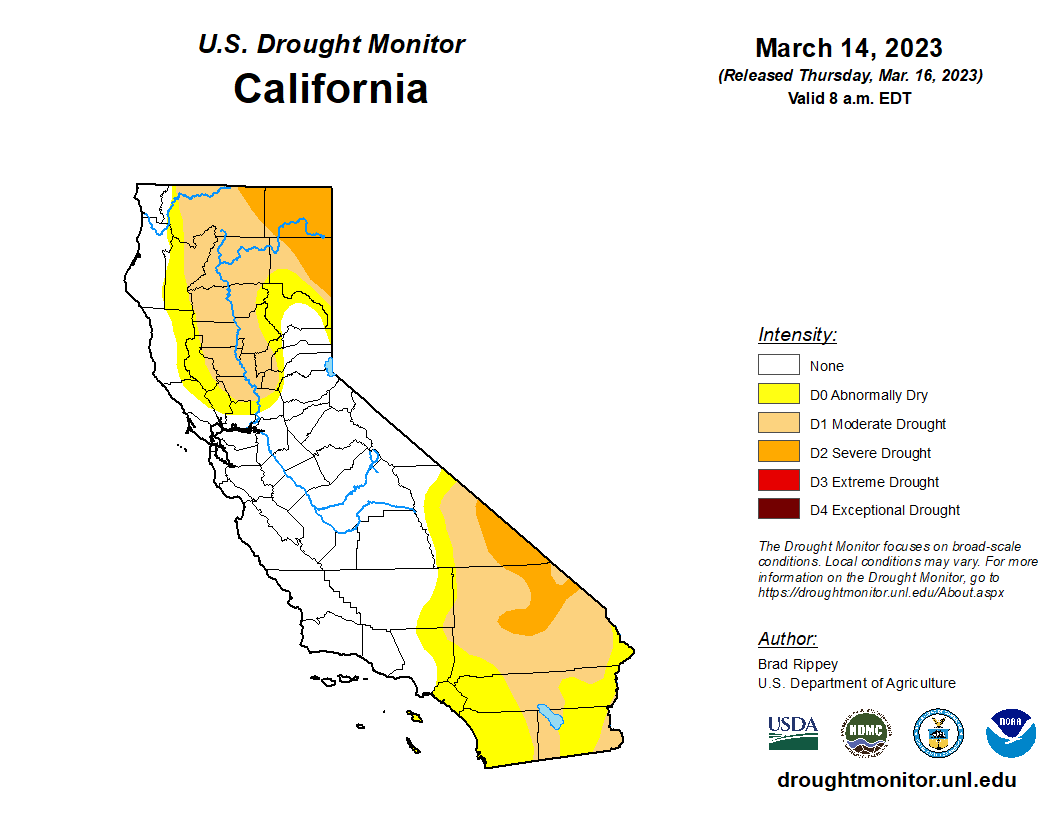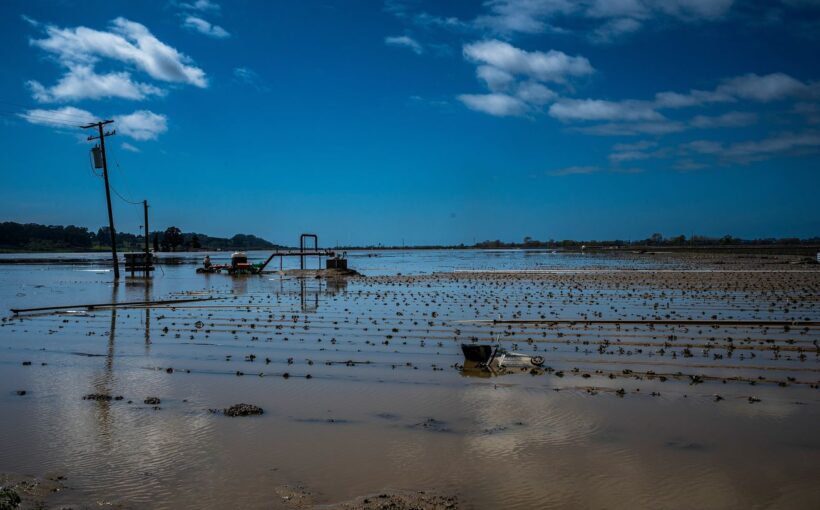
An extremely wet winter has lifted much of California out of drought, and more rain is on the way. The deluge of rain and snowfall this season has “wiped out exceptional and extreme drought in California” for the first time since 2020, according to a spring outlook published today by the National Oceanic and Atmospheric Administration (NOAA).
The agency forecasts more improvement throughout spring, with even more regions potentially seeing their drought conditions end. Even so, California’s recovery will be patchy, and it’ll take years to replenish some crucial water sources. And as recent storms have already shown, the state will continue to face new dangers from flooding.
“Climate change is driving both wet and dry extremes, as illustrated by NOAA’s observations and data that inform this seasonal outlook,” NOAA administrator Rick Spinrad said in a statement.
Maps from the US Drought Monitor illustrate the Golden State’s dramatic shift from parched to drenched over just a few months. In late December, near the start of the winter season, 100 percent of the state was at least “abnormally dry.”
More than a third of California was colored bright red to show “extreme drought” conditions on the December 27th map on the left side of the slider below. On this week’s updated drought map, on the right side of the slider, there’s no red to be found. Now, just a little over half of the state is “abnormally dry.”


Record snowfall has been a hallmark of the season, which also helps to ease drought. The state relies on melting snow to fill rivers and reservoirs during dryer seasons. The amount of water trapped in snowpack across the state was at 190 percent of average for early March, according to a recent assessment by the Department of Water Resources (DWR).
While California needs the water, the way it has descended upon the state this season has been destructive. Communities have been repeatedly hammered by rain and snow from powerful storms arriving via a river of water vapor high up in the atmosphere. Heavy with snow, roofs have caved in over homes and grocery stores in mountain towns. The latest storm left more than 300,000 customers without power this week. It was the 11th atmospheric river storm to hit the state this season — and another could reach California by Sunday.
More rain, coupled with melting snowpack, puts the state at risk of more flooding this spring, NOAA says in its outlook. It’s too soon to tell what the incredibly wet winter will mean for wildfires in California this year, state climatologist Michael Anderson said in a DWR briefing yesterday. That depends on a lot of factors, including how quickly snowpack melts, how rapidly the landscape dries, and the timing of spring plant growth and subsequent drying.
California is coming off “three years of extraordinary drought, just on our rearview mirror,” Anderson said. Moving forward, water scarcity will still be an issue. The state’s groundwater basins, made up of underground aquifers, will need more than one wet season to replenish them.
Moreover, Southern California gets a lot of its water from the Colorado River basin that’s been suffering from drought for more than 20 years and is still at the center of heated negotiations over how states will share its dwindling supply.
“We’ve seen some pretty fantastic weather and we’ve seen conditions improve in a whole lot of places. We still have some lingering impacts that challenge California,” Anderson said in yesterday’s briefing.



